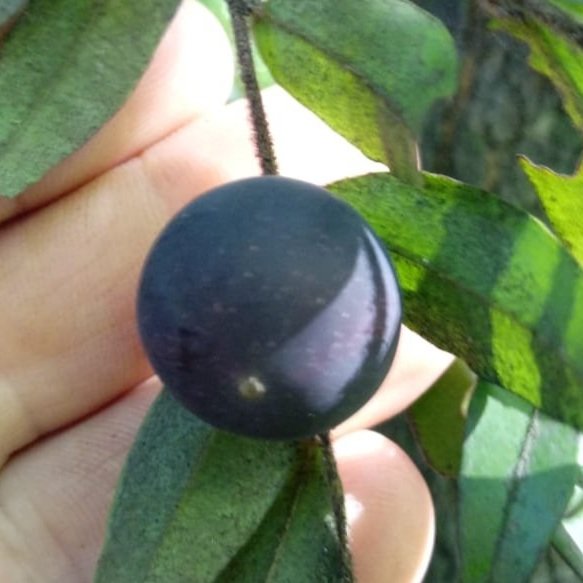Myrciaria Plinioides
Seeds were imported from Brazil. Myrciaria plinioides, commonly referred to as "Cambuí," "Camboim," or "Cambuim," is a plant species belonging to the Myrtaceae family. This shrub is indigenous to the regions of Santa Catarina and Rio Grande do Sul, where it thrives in both seasonal forests and the lush Atlantic rainforest. Cambuí typically reaches a height of 3 to 5 meters and is notable for its vibrant pink flush of young leaves. Flowering occurs between October and November in its native environment. The fruit is nearly spherical, with a smooth, globular shape, and displays a striking blue to bluish-purple hue. Inside, the fruit contains a sweet and juicy pulp, making it both visually appealing and flavorful. Seeds are shipped in humid vermiculite.
Seeds were imported from Brazil. Myrciaria plinioides, commonly referred to as "Cambuí," "Camboim," or "Cambuim," is a plant species belonging to the Myrtaceae family. This shrub is indigenous to the regions of Santa Catarina and Rio Grande do Sul, where it thrives in both seasonal forests and the lush Atlantic rainforest. Cambuí typically reaches a height of 3 to 5 meters and is notable for its vibrant pink flush of young leaves. Flowering occurs between October and November in its native environment. The fruit is nearly spherical, with a smooth, globular shape, and displays a striking blue to bluish-purple hue. Inside, the fruit contains a sweet and juicy pulp, making it both visually appealing and flavorful. Seeds are shipped in humid vermiculite.
Seeds were imported from Brazil. Myrciaria plinioides, commonly referred to as "Cambuí," "Camboim," or "Cambuim," is a plant species belonging to the Myrtaceae family. This shrub is indigenous to the regions of Santa Catarina and Rio Grande do Sul, where it thrives in both seasonal forests and the lush Atlantic rainforest. Cambuí typically reaches a height of 3 to 5 meters and is notable for its vibrant pink flush of young leaves. Flowering occurs between October and November in its native environment. The fruit is nearly spherical, with a smooth, globular shape, and displays a striking blue to bluish-purple hue. Inside, the fruit contains a sweet and juicy pulp, making it both visually appealing and flavorful. Seeds are shipped in humid vermiculite.









